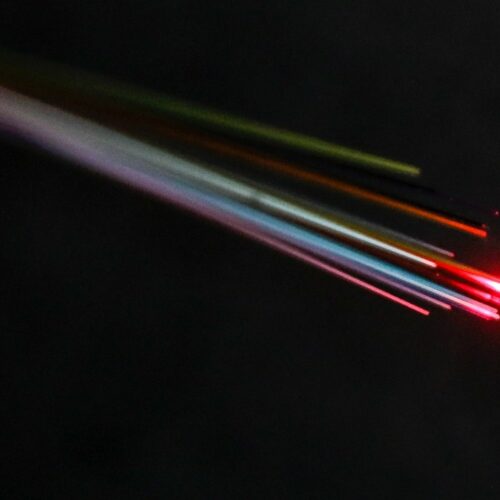A team of researchers has reportedly set a new data transmission world record.
The international group from the Technical University of Denmark (DTU) and Chalmers University of Technology in Sweden used a single light source to transmit 1.8 petabits per second.
In a release, DTU said that they were the first in the world to transmit more than 1 petabit per second – corresponding to 1 million gigabits – using only a single laser and a single optical chip called a “frequency comb.”
“In the experiment, the researchers succeeded in transmitting 1.8 Pbit/s, which corresponds to twice the total global Internet traffic,” they wrote. “And only carried by the light from one optical source. The light source is a custom-designed optical chip, which can use the light from a single infrared laser to create a rainbow spectrum of many colors, i.e. many frequencies. Thus, the one frequency (color) of a single laser can be multiplied into hundreds of frequencies (colors) in a single chip.”
TWITTER FEUD HAS ELON MUSK, JACK DORSEY ARGUING OVER PLATFORM’S CHILD SAFETY PROTECTIONS
Fiber optic cables in a Telecom Italia SpA telephone exchange in Rome, Italy, on Monday, May 17, 2021.
(Photographer: Alessia Pierdomenico/Bloomberg via Getty Images)
The colors are fixed at a specific frequency distance from each other like the teeth on a comb, which is why it is called a frequency comb.
“Each color (or frequency) can then be isolated and used to imprint data. The frequencies can then be reassembled and sent over an optical fibre, thus transmitting data. Even a huge volume of data, as the researchers have discovered,” DTU explained.
Victor Torres Company, a professor at Chalmers University of Technology, said that the chip has ideal characteristics for fiber-optical communications, with “high optical power” and covering a “broad bandwidth within the spectral region that is interesting for advanced optical communications.”

The researchers were from the Technical University of Denmark (DTU) and Chalmers University of Technology in Sweden.
(Karol Serewis/SOPA Images/LightRocket via Getty Images)
However, he notes that the chip was not optimized for this particular application and that some of the characteristic parameters had been achieved by coincidence.
MICROSOFT EXEC SAYS CENSORSHIP IS NOT THE ANSWER TO COMBATTING NEW ERA OF FOREIGN THREATS
“However, with efforts in my team, we are now capable to reverse engineer the process and achieve with high reproducibility microcombs for target applications in telecommunications,” Company said.
The researchers said the solution uses significantly less power and can help to reduce the Internet’s climate footprint.

Single fibers of a fiber optic cable.
(Oed/ullstein bild via Getty Images)
“In other words, our solution provides a potential for replacing hundreds of thousands of the lasers located at Internet hubs and data centers, all of which guzzle power and generate heat. We have an opportunity to contribute to achieving an Internet that leaves a smaller climate footprint,” said Professor Leif Katsuo Oxenløwe, the head of the Centre of Excellence for Silicon Photonics for Optical Communications at DTU.
However, he notes that there is still some development work ahead before the solution can be implemented in current communications systems.
CLICK HERE TO GET THE FOX NEWS APP
The research was published in the journal Nature Photonics.





